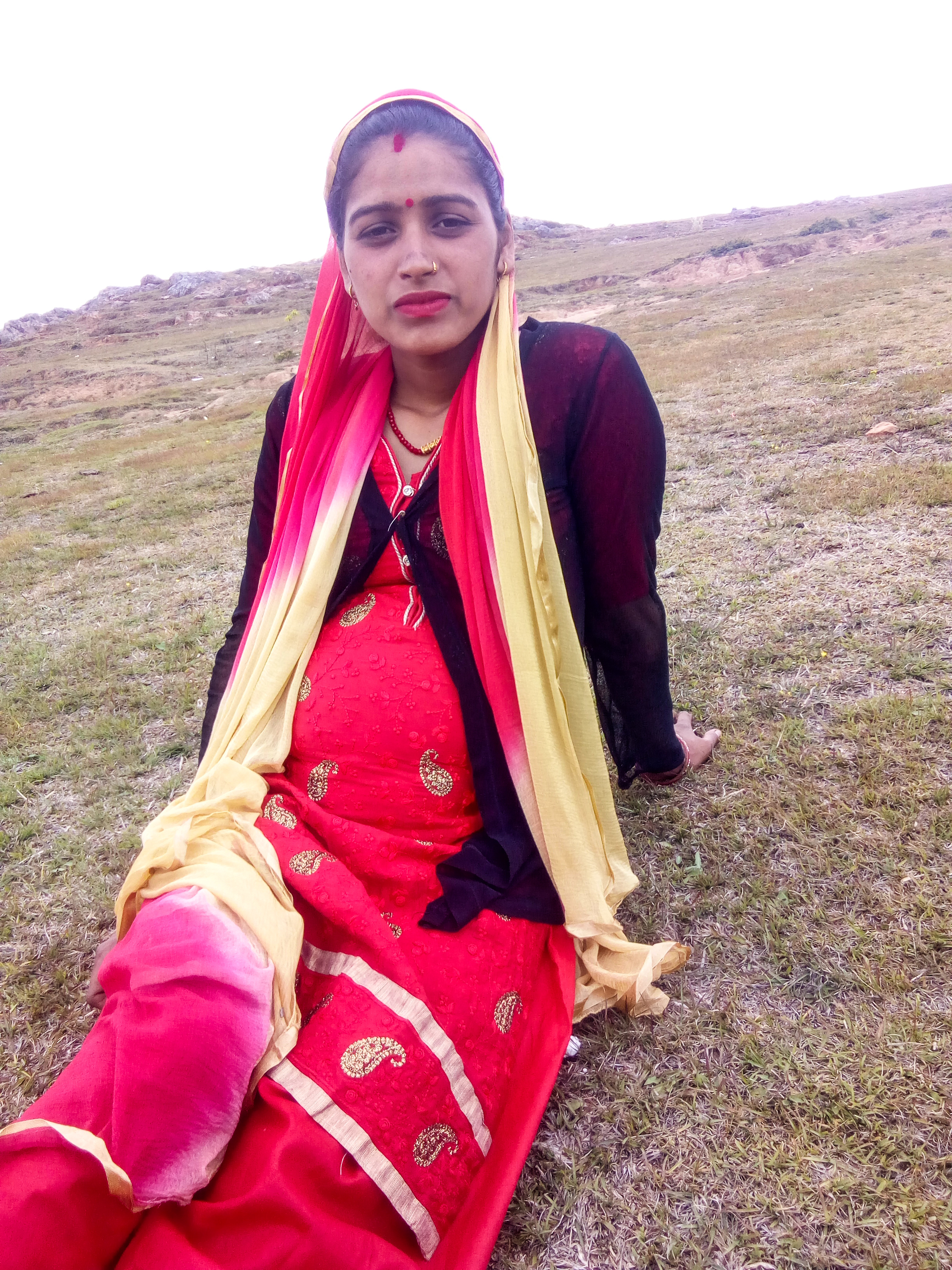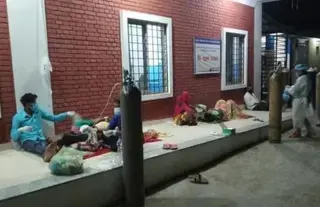KATHMANDU — In far-western Nepal, more than 840 kilometers from the capital city, Dhana Bhatt is excited to welcome her first child. The COVID-19 pandemic has turned her excitement into fear and anxiety.
While COVID-19 is putting people of all ages and gender at risk, pregnant women like her are encountering additional challenges. "My pregnancy check-up is due. But I don’t feel safe going out during the coronavirus lockdown,” says the 20-year-old who is nine months pregnant.

The pregnancy card Bhatt received from the nearby health facility shows the check-up date as May 8 — her due date. “I am really worried about my delivery and also about my baby while living through this serious disease,” Bhatt says. Like her, many pregnant women do not want to risk visiting a hospital for a check-up as they fear getting infected with the virus. The nearest health facility, Kesharpur Primary Health Care Center, is a one hour walk from her home in Baitadi and the only way to reach there is on foot.
“Questions like what will happen if complications arise? How will I reach the hospital? Whether I will be able to make it on time - constantly worry me,” she says. Furthermore, thinking of danger signs during pregnancy compound fears. For any case requiring an obstetric emergency such as a caesarean delivery, a pregnant woman of Bhatt’s village in Karala, Melauli Municipality, has to travel more than 65 kilometers, mostly through a dirt road, to the district headquarters in a vehicle.
An unforgettable ordeal
On the evening of April 12 when she was at her maternal home, Maisarjaha Khatun begun to have contractions. “Having delivered the first two babies at home, I thought my third delivery would be smooth going,” says Khatun.
“When the pain started reaching an unbearable level, I was taken to the nearby health facility,” says the 25-year-old. But the local health center at Chauri of Buddhabhumi Municipality referred her to the district hospital, 18 kilometers away, saying it was a complicate case and needed to be treated at a better-equipped hospital.

In the wake of severe movement restrictions, it took the Khatun family almost two hours to find a vehicle. “We rang up several people and offices seeking their help to find a vehicle, but to no avail. Luckily, we found a rickshaw and finally reached the district hospital. Any further delay could have resulted in a devastating outcome for my wife and baby,” says her husband Barkat Ali (29). Evidence shows that most maternal and newborn deaths occur around the time of labor, delivery and the immediate postpartum period.
Next day on April 13, Khatun delivered a healthy baby at the hospital in Province 5 after 13 hours of labour pain. “Since the coronavirus outbreak and the lockdown measures, I was worried that I may not be able to visit the hospital on time and get help for the delivery, and the risks involved”. On my way to the district hospital, I thought I was dying due to the long labor pains,” says Khatun. “The movement restrictions compounded my fears.”
A public health issue
Many pregnant women and new mothers stopped visiting health facilities for antenatal and postnatal check-ups unless there is an emergency, says Nawal Kishore Jha, Chief of the Health Division, Ministry of Social Development in Province 2.
According to the recent UNFPA rapid assessment of the functionality of maternal and neonatal health services in its priority working districts in Nepal, the utilization rate of sexual and reproductive health services is very low, partly due to the travel restrictions and fears of the COVID-19 outbreak.
In the fiscal year 2018-2019, there were around 757,000 pregnancies across Nepal, according to the Department of Health Services. “As the lockdown is continuing, most of the women and girls who are in need of reproductive health services are not visiting health facilities,” says Jha. “Even in pandemics like COVID-19, we need to provide reproductive health service – otherwise there will be a rise in unplanned pregnancies, unsafe abortion and maternal deaths - we cannot afford to let that happen. But we also need to ensure that our health facility continues receive all the supplies we need and our health workers are protected,” he adds.
In pandemic situations, the breakdown of health systems can cause an increase in maternal and newborn deaths due to untreated complications. Hence, these lifesaving interventions must be available and accessible in the pandemic as in normal circumstances.
In order to boost the national response to COVID-19 and protect vulnerable women and girls to exercise their reproductive rights, UNFPA is working with the Government of Nepal, UN agencies including WHO and UNICEF, and local partners at the federal, provincial and local levels.
(Santosh Chhetri)



